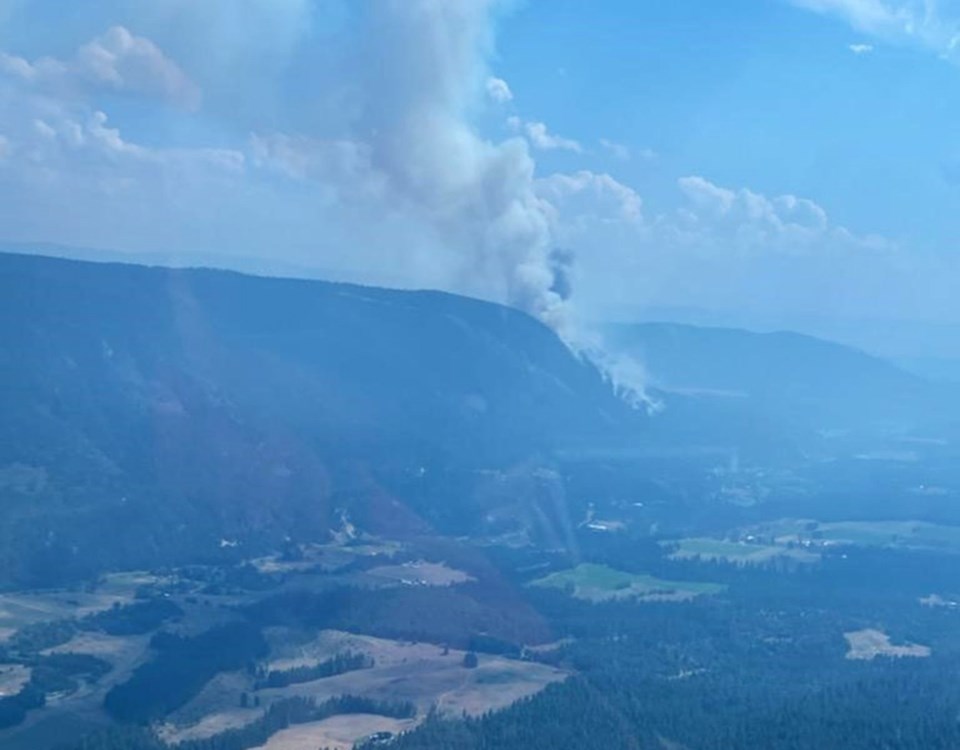VALEMOUNT, B.C. — An evacuation order issued Saturday due to out-of-control wildfires south of Valemount, B.C., has been cancelled, as officials thanked the fast action of BC Wildfire Service members who fought to contain the flames.
Residents in the Regional District of Fraser-Fort George and the Village of Valemount that were ordered to flee were able to return home Sunday.
Valemount Mayor Owen Torgerson said Sunday he felt “nothing but gratitude” for the firefighters who contained the blaze within hours.
“There was a very quick response by our local fire department, so we had resources on the ground, quickly followed by a swift response from the BC Wildfire Service,” said Torgerson.
“They were the first responders and we are so grateful for their response,” he added.
The BC Wildfire Service said its ground crews have been battling the Canoe Road Wildfire with assistance from Prince George Fire Centre and the Valemount Fire Department.
The agency said airtankers, skimmers and helicopters had also been sent out to respond to the wildfire.
The Canoe Road wildfire was discovered on Saturday and was 0.08 square kilometres in size as of that evening.
Torgerson recalled the Village of Valemount had activated its emergency operations centre and was in contact with the Ministry of Emergency Management after seeing the fires burning about three kilometres away from town.
He said his family had already prepared a 72-hour go kit when the evacuation order was issued.
Torgerson said the fire was started by lightning on a private property with a fairly substantial fuel load, and officials will be monitoring wind conditions Sunday to decide their next course of action.
Valemount is located about 230 kilometres northeast of Kamloops and is home to over 1,000 people based on Statistics Canada's 2021 Census figures.
The now-cancelled evacuation order had affected residents from properties east of Highway 5, south of 17th Ave, and north of the Canoe River. An evacuation alert is now in place for the Cedarside area — meaning residents can remain home but should prepare for a potential order to evacuate.
More than 400 fires were burning across B.C. as of Sunday morning, with 89 per cent of them being started by lightning.
Sarah Budd, an information officer with BC Wildfire Service, said Sunday the province is experiencing a trough weather system in August. She said such systems mean there is more atmospheric instability, which can lead to more lightning.
But most of the recent lightning activity in B.C. has come with only limited precipitation. Budd said the dry conditions, when combined with existing drought, make fuels on the ground easier to ignite.
“When we get that lightning coming in without any rain, it's pretty easy for that to start a fire,” said Budd.
At least some precipitation was in the forecast for Sunday, as Environment Canada issued severe thunderstorm watches for B.C.'s southern Interior, including the Canoe Road wildfire region.
Environment Canada said conditions are favourable for the development of “dangerous thunderstorms” in the Fraser Canyon, Nicola, North, and South Thompson areas.
The weather agency said most of the province is covered in a blanket of smoky haze Sunday due to wildfire smoke.
BC Wildfire Service is also asking people to stay away from Nancy Greene Lake Sunday afternoon as three helicopters are actively pulling water from the lake to battle the Mount Neptune wildfire, located about 18 kilometres north of the city of Rossland, B.C.
It said the lighting-caused blaze which started Saturday evening shows “aggressive fire behaviour,” and ground crews are responding to the blaze with assistance from helicopters.
The agency also warns people not to use boats or other vessels in the area, as boat recreators would affect firefighters' operations.
The service said more than 1,600 personnel are responding to the fires across the province, and as of Sunday morning, 37 blazes had been extinguished in the last 24 hours.
This report by The Canadian Press was first published Aug. 11, 2024.
The Canadian Press




